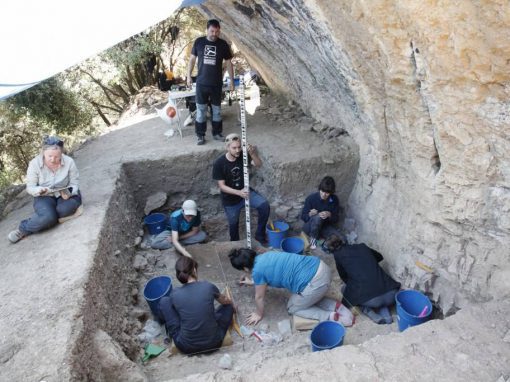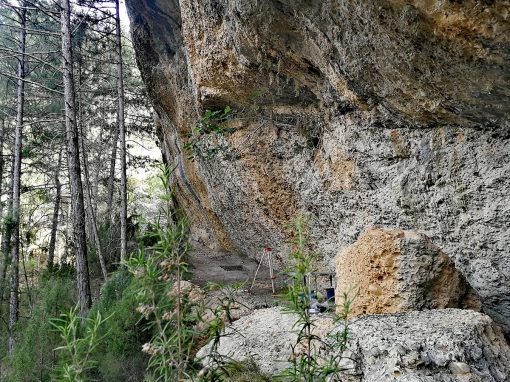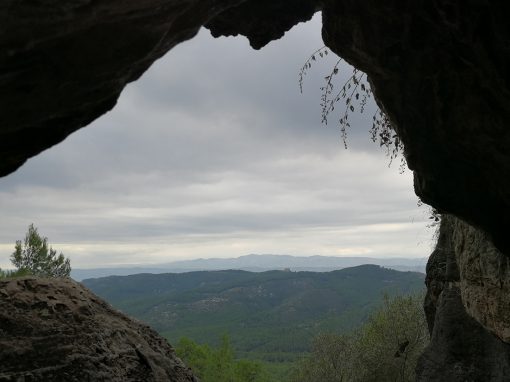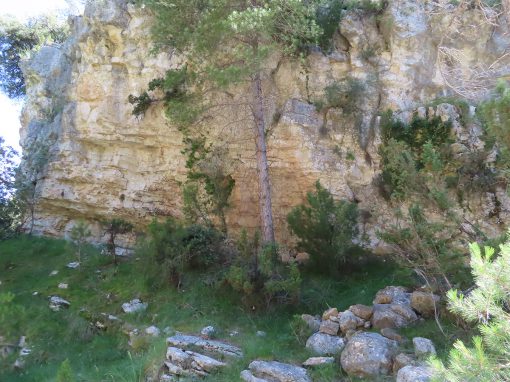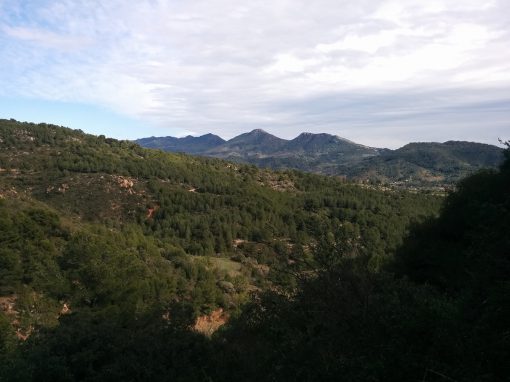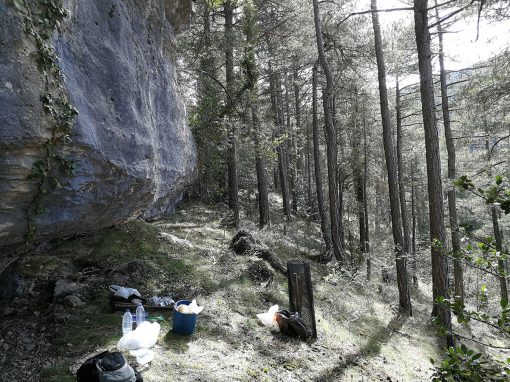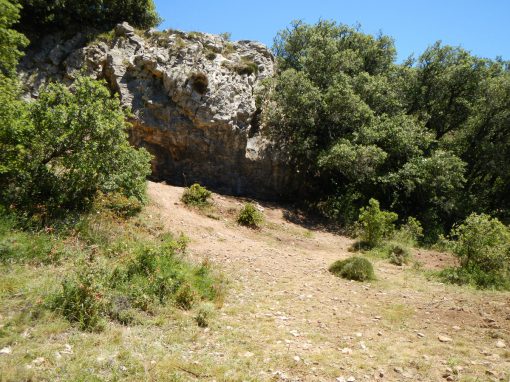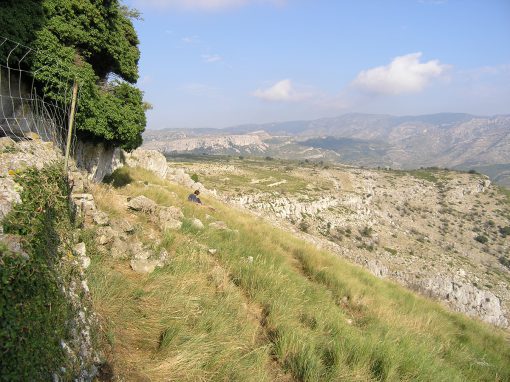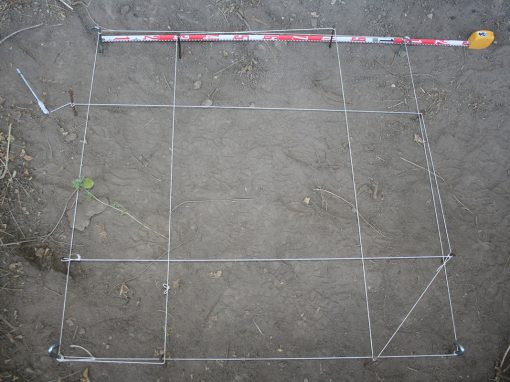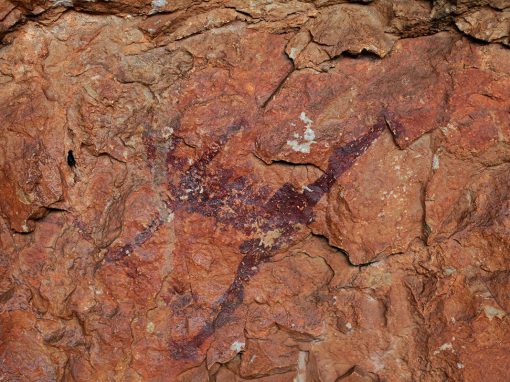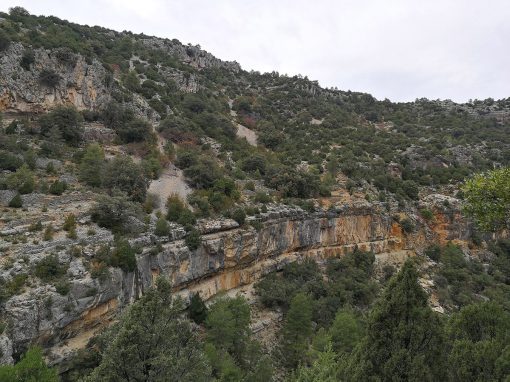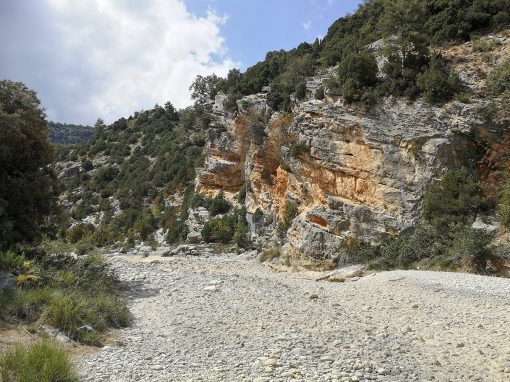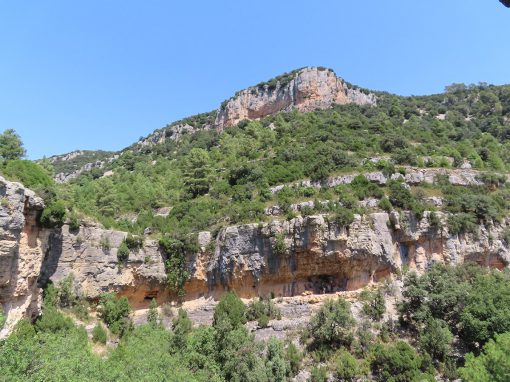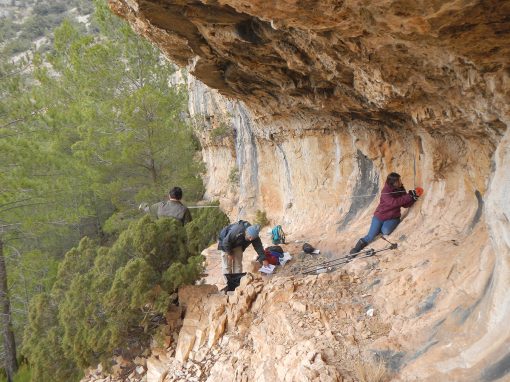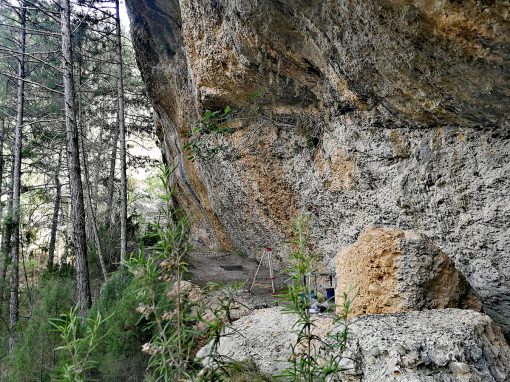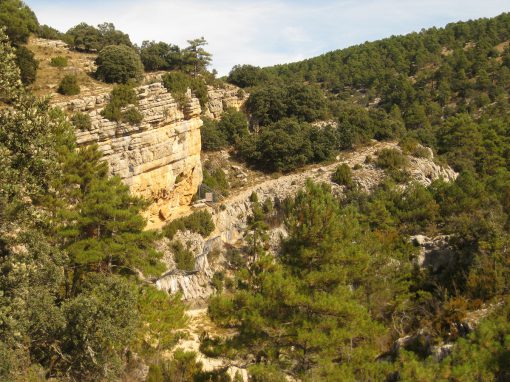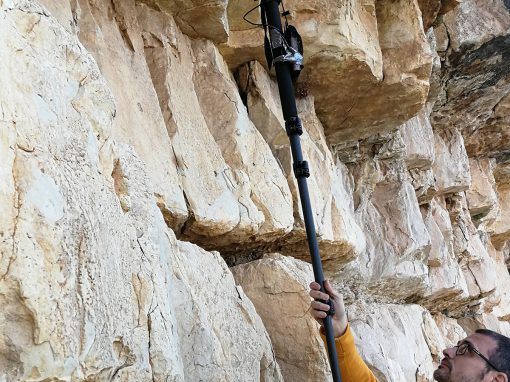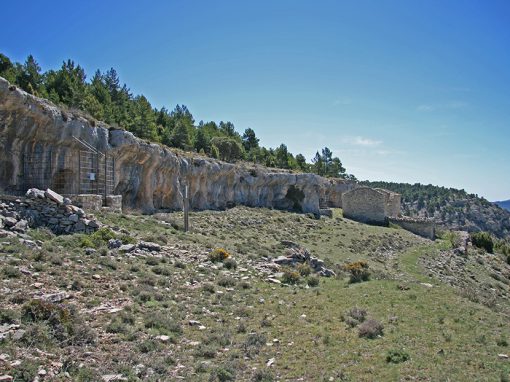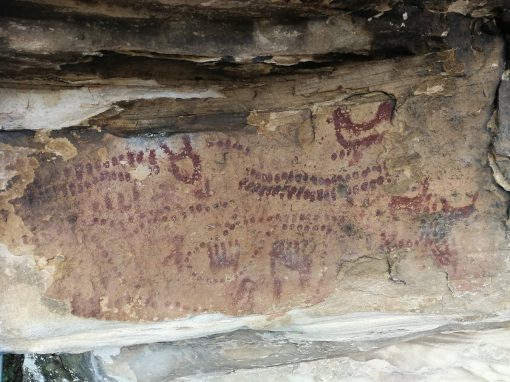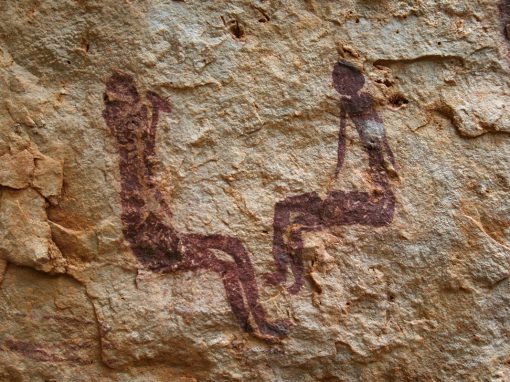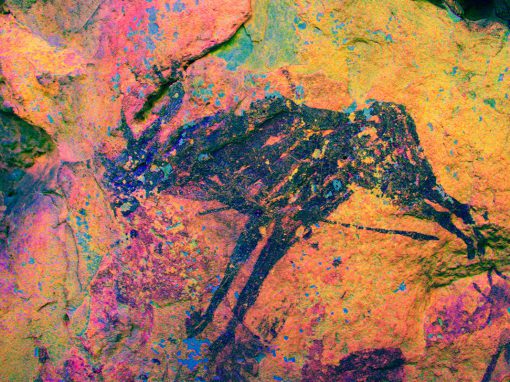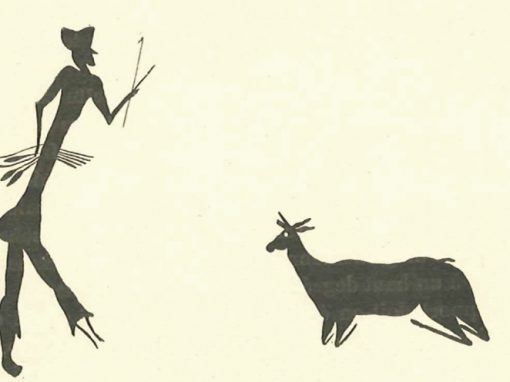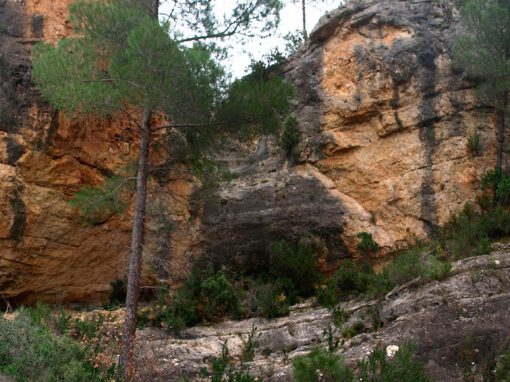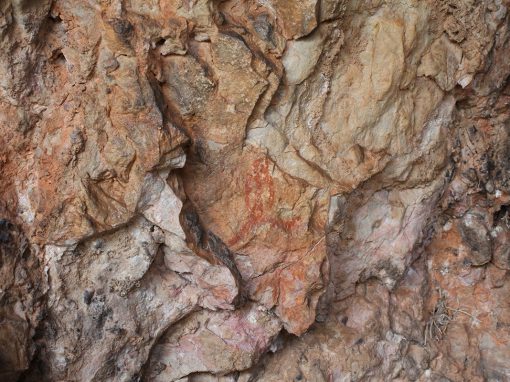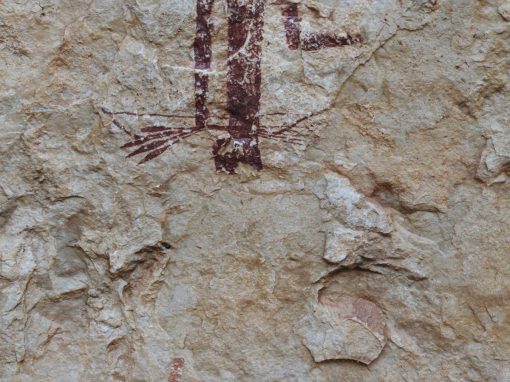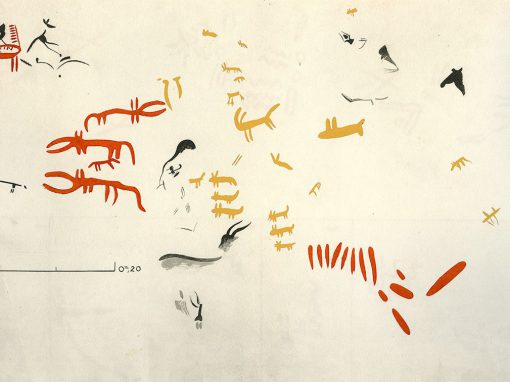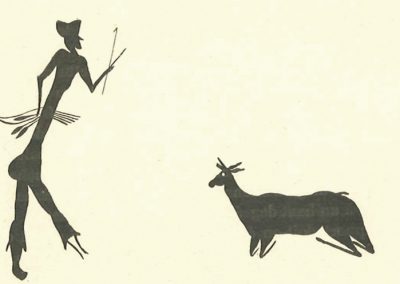Abrigo de Tortosilla
Town
Ayora (Valle de Cofrentes-Ayora, Valencia)
Other names
Abrigo de Tortosillas
Information
This was the first prehistoric art discovery in the Valencian region, found in the summer of 1911 by the brothers Daniel and Pascual Serrano.
The Tortosilla shelter opens to the southeast on the slope of the Muela or Puntal de la Tortosilla, in the central part of a belt punctuated by numerous cavities, of which only two still have pictorial remains today. Its location is unique because of its wide visual dominion over the territory and its proximity to a strong-flowing spring on the Tortosilla estate. The main cavity is small (only about 3 m wide and 2 m deep) and hemispherical in shape, and preserves a continuous frieze in which we can identify the remains of 20 painted motifs of the Levantine and Schematic type.
The outstanding figure is a large, naturalistic archer, well characterised with a trapezoid headdress and facial details, marked buttocks and trousers tight at the calf. He is armed with a bow and a bundle of arrows, from which he is extracting one to prepare his shot. Next to him are the remains of six naturalistic deer distributed along the entire length of the frieze.
Domingo, I.; Rubio, R. y Rives, B. 2012. Actas de las Jornadas Abrigo de Tortosilla. 100 aniversario de su descubrimiento. Ayora, Ayuntamiento de Ayora/ Diputación de Valencia.
Breuil, H., Serrano, P. y Cabré, J. 1912. Les pintures rupestres d’Espagne. V. Tortosilla a Ayora (Valence). L’Anthropologie, XXIII: 561-562.
VISITA VIRTUAL
https://sketchfab.com/models/7c693dd346a748629cec03b2df16745b
Other similar projects
